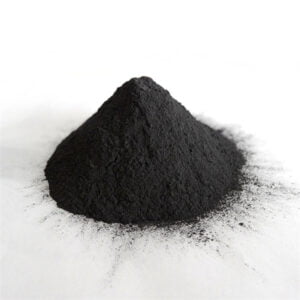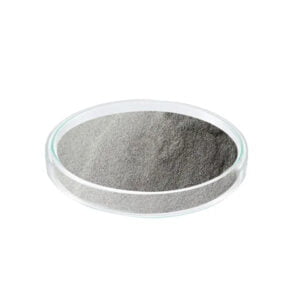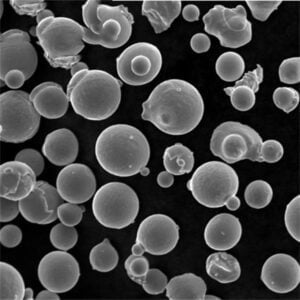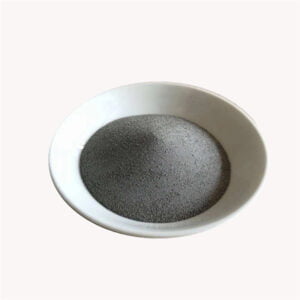Druk 3D Inconel 625
Spis treści
Druk 3D Inconel 625 to stop niklowo-chromowo-molibdenowy, który można drukować w 3D w wysokowydajne komponenty do wymagających zastosowań. Ten przewodnik obejmuje wszystko na temat Inconelu 625 do produkcji addytywnej.
Przegląd Druk 3D z Inconelem 625
Inconel 625 to superstop wykazujący:
- Wysoka wytrzymałość i twardość w podwyższonych temperaturach
- Doskonała odporność na korozję
- Dobrą spawalność i obrabialność
- Odporność na utlenianie i pełzanie
Kluczowe właściwości sprawiają, że nadaje się do drukowania 3D złożonych geometrii przy użyciu proszków:
- Dostępny dla głównych procesów drukowania: DMLS, SLM, Binder Jetting
- Zdolność do drukowania nawisów i kanałów wewnętrznych
- Dobra dokładność wymiarowa i wykończenie powierzchni
- Komponenty o dużej gęstości z drobną mikrostrukturą
- Właściwości porównywalne lub przewyższające odlewy i wyroby walcowane
- Redukcja odpadów w porównaniu z technikami subtraktywnymi
Połączenie wytrzymałości, ciągliwości i odporności na korozję Inconelu 625 umożliwia lekkie, wysokowydajne drukowane części w różnych branżach.
Skład Inconelu 625
Typowy skład stopu Inconel 625:
- Nikiel – 58%
- Chrom – 20-23%
- Molibden – 8-10%
- Żelazo – maks. 5%
- Niob – 3-4%
- Śladowe ilości C, Si, P, S
Kluczowe pierwiastki stopowe, takie jak chrom, molibden i niob, zapewniają odporność na utlenianie w wysokich temperaturach, dodatkową twardość i utwardzanie wydzieleniowe. Skład można dostosować w oparciu o wymagania aplikacji.
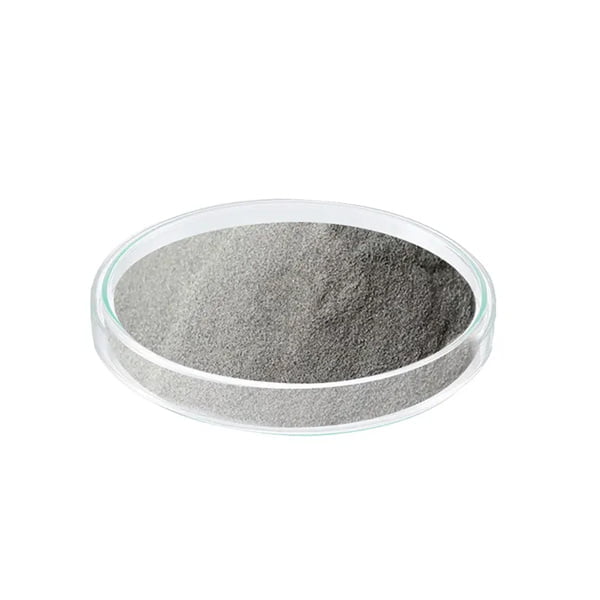
Kluczowe właściwości Inconelu 625
Właściwości Inconelu 625:
- Gęstość – 8,44 g/cm3
- Temperatura topnienia – 1300°C
- Wytrzymałość na rozciąganie – 760-1380 MPa
- Granica plastyczności – 550 MPa
- Wydłużenie – 50%
- Moduł sprężystości – 200-217 GPa
- Przewodność cieplna – 9,8 W/m-K
- Współczynnik rozszerzalności cieplnej – 12,8 x 10-6 m/m°C
Równowaga wysokiej wytrzymałości, ciągliwości, odporności na korozję i stabilnych właściwości w podwyższonych temperaturach sprawia, że ten superstop jest przydatny w wymagających zastosowaniach.
Proszek Inconel 625 do druku 3D
Kluczowe cechy proszku Inconel 625 do produkcji addytywnej:
Właściwości proszku Inconel 625
- Kształt cząstek – Głównie sferyczny
- Rozmiar cząstek – 15-45 mikronów
- Gęstość pozorna – 4 g/cm3
- Płynność – Lekko spójna
- Czystość – Nikiel + inne pierwiastki stopowe > 99,5%
- Zawartość tlenu – <500 ppm
Sferyczna morfologia i kontrolowany rozkład wielkości cząstek umożliwiają gładkie rozprowadzanie proszku podczas drukowania. Wysoka czystość minimalizuje wady.
Metody drukowania 3D Inconelu 625
Popularne procesy produkcji addytywnej odpowiednie dla Inconelu 625 obejmują:
Metody drukowania 3D dla Inconelu 625
| Metoda | Opis |
|---|---|
| DMLS | Używa lasera do stapiania proszku metalowego |
| SLM | Selektywne stapianie laserowe proszku |
| Rozpylanie spoiwa | Wiąże proszek za pomocą płynnego środka |
| LENS | Kształtowanie netto z wykorzystaniem lasera |
| EBM | Topienie wiązką elektronów w próżni |
DMLS i SLM oferują
Zastosowania części drukowanych 3D z Inconelu 625
Przemysł wykorzystujący komponenty z Inconelu 625 wytwarzane metodą addytywną:
Zastosowania drukowanego 3D Inconelu 625
| Przemysł | Zastosowania |
|---|---|
| Lotnictwo i kosmonautyka | Łopatki turbin, komory spalania, dysze |
| Ropa i gaz | Zawory, części głowic studziennych narażone na działanie kwaśnych gazów |
| Wytwarzanie energii | Rury wymienników ciepła, wały pomp |
| Motoryzacja | Koła turbosprężarki, elementy układu wydechowego |
| Przetwarzanie chemiczne | Części odporne na korozję do obsługi płynów |
Inne zastosowania obejmują osłony termiczne, prasy, reaktory jądrowe, sprzęt sportowy i implanty biomedyczne, wykorzystujące wytrzymałość, ciągliwość i biokompatybilność.
Korzyści z drukowania 3D Inconelu 625
Kluczowe zalety wytwarzania addytywnego z Inconelem 625:
Korzyści z drukowania 3D Inconelu 625
- Możliwość wytwarzania złożonych, zoptymalizowanych geometrii
- Krótszy czas realizacji i niższe koszty w porównaniu z obróbką skrawaniem
- Zmniejszona waga dzięki optymalizacji topologii
- Mniej odpadów w porównaniu z technikami subtraktywnymi
- Doskonałe właściwości materiałowe w porównaniu z odlewaniem
- Brak potrzeby stosowania kosztownych narzędzi lub matryc
- Konsolidacja podzespołów w pojedyncze części
- Dostosowywanie i szybkie prototypowanie
Drukowanie 3D pokonuje ograniczenia tradycyjnej produkcji, aby wytwarzać wysokowydajne komponenty z Inconelu.
Ograniczenia drukowania Inconelu 625
Wyzwania związane z drukowaniem 3D Inconelu 625
- Wysoki koszt proszku Inconel 625
- Wymóg stosowania gazu obojętnego podczas drukowania
- Trudności w usuwaniu struktur podporowych
- Obróbka końcowa może być wymagana w celu odprężenia
- Testowanie wymagane do kwalifikacji wydrukowanych części
- Mniejsza ciągliwość niż Inconel 625 walcowany
- Ograniczona liczba wykwalifikowanych dostawców
- Duże części ograniczone objętością budowy drukarki
Udoskonalenia i kwalifikacje procesów rozszerzą zastosowanie komponentów z Inconelu 625 wytwarzanych addytywnie w krytycznych zastosowaniach.
Dostawcy proszku Inconel 625 do drukowania 3D
Renomowani dostawcy proszku Inconel 625 do AM obejmują:
Dostawcy proszku Inconel 625
| Firma | Lokalizacja |
|---|---|
| Sandvik | Niemcy |
| Praxair | USA |
| Carpenter Additive | USA |
| AP&C | Kanada |
| SLM Solutions | Niemcy |
| Technologia LPW | WIELKA BRYTANIA |
Firmy te produkują proszek Inconel 625 metodą atomizacji gazem obojętnym i ściśle kontrolują rozkład wielkości cząstek, morfologię, zawartość tlenu i inne atrybuty jakości.
Analiza kosztów materiału Inconel 625
Koszt proszku Inconel 625
| Ilość | Cena za kg |
|---|---|
| 1-10 kg | $100-150 |
| 10-50 kg | $80-120 |
| >50 kg | $50-100 |
Koszt jest wyższy niż proszku ze stali nierdzewnej, ale niższy niż stopów reaktywnych, takich jak tytan. Obowiązują rabaty przy zamówieniach hurtowych. Koszt części zależy również od geometrii produktu i tempa budowy.
Analiza porównawcza Inconelu 625
Porównanie Inconelu 625 ze stalą nierdzewną i chromem kobaltu
| Stop | Inconel 625 | Stal nierdzewna 316L | Stop CoCr |
|---|---|---|---|
| Gęstość (g/cm3) | 8.4 | 8.0 | 8.3 |
| Wytrzymałość na rozciąganie (MPa) | 1035 | 515 | 655 |
| Temperatura topnienia (°C) | 1300 | 1370 | 1290 |
| Odporność na korozję | Doskonały | Dobry | Uczciwy |
| Koszt | Wysoki | Niski | Umiarkowany |
| Możliwość drukowania | Uczciwy | Doskonały | Dobry |
Inconel 625 oferuje najlepszą wydajność w wysokich temperaturach, ale ma wyższe koszty materiałowe. Stal nierdzewna jest łatwiejsza do drukowania i tańsza. Chrom kobaltu zapewnia równowagę w zastosowaniach stomatologicznych i medycznych.

Najczęściej zadawane pytania
P: Jaka wielkość cząstek jest optymalna dla drukowania 3D Inconelu 625?
O: Zalecany jest zakres wielkości cząstek od 15 do 45 mikronów, z morfologią sferyczną i wąskim rozkładem dla optymalnej płynności i wysokiej gęstości upakowania podczas drukowania.
P: Jaki proces drukowania jest najbardziej odpowiedni dla Inconelu 625?
O: DMLS i SLM z użyciem lasera dużej mocy zapewniają najlepszą dokładność, gęstość i wykończenie powierzchni. Spiekanie z użyciem spoiwa oferuje szybsze tempo budowy, ale niższe właściwości mechaniczne.
P: Czy Inconel 625 wymaga obróbki cieplnej po drukowaniu 3D?
O: Tak, często przeprowadza się cykl wyżarzania i starzenia w celu odprężenia i uzyskania optymalnej ciągliwości, wytrzymałości i innych właściwości mechanicznych.
P: Jakie branże najczęściej wykorzystują drukowany 3D Inconel 625?
O: Przemysł lotniczy jest największym użytkownikiem komponentów do spalania. Przemysł naftowy i gazowy, energetyka, motoryzacja i przetwórstwo chemiczne również wykorzystują drukowany 3D Inconel 625.
P: Czy można drukować 3D części z Inconelu 625 o stopniowanej funkcjonalności?
O: Tak, metody kontroli wokseli pozwalają na ciągłe zmienianie składów i mikrostruktur w obrębie jednej wydrukowanej części poprzez precyzyjne mieszanie proszku i modulację lasera.
P: Czy Inconel 625 wymaga prasowania gorącego izostatycznego po wytwarzaniu addytywnym?
O: Chociaż HIP może wyeliminować wewnętrzne pory i poprawić odporność na zmęczenie, ostatnie udoskonalenia procesu pozwalają na uzyskanie pełnej gęstości podczas drukowania w większości zastosowań.
P: Jakie procesy wykańczania są stosowane na drukowanym Inconelu 625?
O: Wydrukowane części często poddawane są obróbce ściernej, śrutowaniu, szlifowaniu i polerowaniu w celu wygładzenia powierzchni i usunięcia podpór. Można również zastosować prasowanie gorące izostatyczne.
P: Czy właściwości materiałowe drukowanego 3D Inconelu 625 są porównywalne z walcowanym?
O: Prawidłowo wydrukowany i przetworzony Inconel 625 może dorównać, a nawet przewyższyć wytrzymałość na rozciąganie, ciągliwość, odporność na pękanie i inne właściwości konwencjonalnie przetworzonego stopu walcowanego.
P: Jakie aspekty projektowe mają zastosowanie do części AM z Inconelu 625?
O: Drobne elementy wymagają grubszych ścian. Konstrukcje powinny unikać nawisów, minimalizować podpory i uwzględniać naprężenia termiczne. Moduły można konsolidować w monolityczne komponenty.
poznaj więcej procesów druku 3D
Często zadawane pytania (FAQ)
1) What powder specifications matter most when 3D Printing Inconel 625?
- Spherical morphology, PSD 15–45 µm (LPBF), O ≤0.06–0.10 wt%, N ≤0.03 wt%, low satellites, Hall/Carney flow within spec, and consistent apparent/tap density. These drive spreadability, density, and defect control.
2) What post-processing sequence is recommended for high-reliability parts?
- Typical route: stress relief → HIP (optional but recommended for fatigue/leak-critical parts) → solution anneal (~1,150–1,200°C) → rapid quench → aging if required by spec → machining/finishing → NDT (CT/dye pen) and mechanical qualification.
3) How does Inconel 625 compare to 718 for AM?
- 625: solid-solution strengthened, excellent corrosion and weldability, easier to process with less cracking, lower high-temp strength than 718. 718: precipitation strengthened, higher strength at 650–700°C but more complex heat treatment and cracking sensitivity.
4) What build strategy reduces porosity and keyholing in LPBF?
- Maintain moderate volumetric energy density, use contour scans, optimize hatch spacing, ensure high-purity inert atmosphere (O2 <100 ppm), and validate with melt pool monitoring and density checks (Archimedes + CT for critical parts).
5) Can powder be reused without degrading performance?
- Yes, if controlled: sieve between builds; monitor O/N/H, PSD drift, and flow; set reuse limits and blend with virgin to maintain interstitial/spec targets. Track exposure time and keep powder under dry, high-purity argon.
2025 Industry Trends
- Certified process parameter sets: OEMs release 625 PBF-LB recipes targeting near-zero lack-of-fusion with improved contour strategies and gas flow mapping.
- Corrosion-first applications: Increased adoption in offshore wind, geothermal, and sour-service components where 625 outperforms 718 in chloride/sulfide media.
- Data-rich CoAs: Routine inclusion of raw PSD files, SEM morphology, O/N/H trends, and powder exposure logs to accelerate PPAP/FAI.
- Sustainability focus: Powder take-back/reconditioning programs and argon recirculation cut total cost of ownership.
- Binder jetting maturation: Finer 625 cuts (5–25 µm) and advanced sinter profiles improve density for non-pressure-retaining parts.
2025 Snapshot: 3D Printing Inconel 625 KPIs
| Metric (2025e) | Typical Value/Range | Notes/Source |
|---|---|---|
| LPBF PSD | D10 15–20 µm; D50 25–35 µm; D90 40–50 µm | ISO/ASTM 52907 context |
| Oxygen (AM-grade) | ≤0.06–0.10 wt% | Supplier CoAs |
| As-built relative density | ≥99.5% with tuned parameters | CT verification |
| Post-HIP density | ≥99.9% | Leak- and fatigue-critical |
| Typical UTS (post-HT) | ~800–1,000+ MPa | Process/spec dependent |
| Price band (powder) | ~$60–$150/kg (spec/region/volume) | Market quotes |
| Czas realizacji | 3–7 weeks stocked; 8–12 weeks MTO | Supplier disclosures |
Authoritative sources:
- ISO/ASTM 52907; ASTM F3049 (powder characterization): https://www.astm.org, https://www.iso.org
- AMS 5666/5599 and ASTM B443/B446 (alloy forms/heat treatment guidance)
- ASM Handbook, Vol. 7: Powder Metallurgy; Vol. 13A Corrosion: https://www.asminternational.org
- AMPP/NACE sour-service guidance: https://www.ampp.org
Latest Research Cases
Case Study 1: LPBF Inconel 625 Heat Exchanger with Topology Optimization (2025)
- Background: A geothermal OEM needed compact, corrosion-resistant exchangers with reduced pressure drop.
- Solution: Printed 625 using LPBF with optimized lattice channels; high-purity argon (O2 <50 ppm), contour + remelt strategy; HIP → solution anneal; internal surface finishing via abrasive flow machining.
- Results: Relative density 99.9% post-HIP; pressure drop −21% vs. machined design; ASTM G28 Method A corrosion rate matched wrought baseline; production lead time −38%.
Case Study 2: Binder-Jetted 625 Impellers for Chemical Pumps (2024/2025)
- Background: A chemical processing firm sought spare-part agility for corrosive services.
- Solution: Adopted 5–25 µm 625 powder, solvent debind + high-temp sinter in H2/N2-controlled atmosphere; selective HIP for pressure-retaining variants; final machining of sealing surfaces.
- Results: Achieved 96–98% density as-sintered; HIPed parts ≥99.8%; lifecycle cost −15% with on-demand spares; cavitation performance on par with cast 625 after surface finishing.
Opinie ekspertów
- Dr. John A. Slotwinski, Additive Manufacturing Metrology Expert (former NIST)
- Viewpoint: “For 3D Printing Inconel 625, density is necessary but not sufficient—monitoring interstitials and PSD tails across reuse cycles is critical to assure repeatable mechanicals.”
- Prof. Tresa M. Pollock, Distinguished Professor of Materials, UC Santa Barbara
- Viewpoint: “Contour control and heat management mitigate keyholing and microsegregation in 625; pairing with HIP enables fatigue performance competitive with wrought.”
- Dr. Christina Bertulli, Director of Materials Engineering, EOS
- Viewpoint: “Data-rich CoAs and validated process maps shorten qualification for 625 beyond aerospace—especially in energy and chemical sectors.”
Practical Tools/Resources
- Standards: ISO/ASTM 52907; ASTM F3049; relevant AMS specs (e.g., AMS 5666 for heat treat guidance); ASTM E8/E18 for tensile/hardness
- Corrosion testing: ASTM G28 (intergranular corrosion in Ni-Cr-Mo alloys); ASTM G48 (pitting); ASTM G31 immersion tests
- Metrology: Inert gas fusion (O/N/H), laser diffraction (PSD), SEM for morphology, CT for porosity, in-situ melt pool monitoring
- Process control: Gas purity monitors (O2 <100 ppm), powder reuse SOPs, exposure time logging, SPC on density/mechanicals
- Design/simulation: Ansys/Simufact Additive for distortion and support optimization; topology optimization tools for weight reduction
Implementation tips:
- Specify CoA with chemistry incl. interstitials, PSD (D10/D50/D90), morphology images, flow/tap/apparent density, and lot genealogy.
- Use tuned LPBF parameters with contour + remelt; validate density via CT for pressure-retaining parts.
- Plan HIP for fatigue- and leak-critical applications; follow with solution anneal and required finishing.
- For corrosive service, confirm performance with ASTM G28/G48 testing and surface finish controls on wetted geometries.
Last updated: 2025-10-13
Changelog: Added focused 5-question FAQ, 2025 KPI table, two recent case studies (LPBF heat exchanger and binder-jetted impellers), expert viewpoints, and practical tools/resources with implementation tips for 3D Printing Inconel 625
Next review date & triggers: 2026-04-20 or earlier if ISO/ASTM/AMS standards update, major supplier CoA practices change, or new data on HIP effects and powder reuse for Inconel 625 AM is published
Udostępnij
MET3DP Technology Co., LTD jest wiodącym dostawcą rozwiązań w zakresie produkcji addytywnej z siedzibą w Qingdao w Chinach. Nasza firma specjalizuje się w sprzęcie do druku 3D i wysokowydajnych proszkach metali do zastosowań przemysłowych.
Zapytaj o najlepszą cenę i spersonalizowane rozwiązanie dla Twojej firmy!
Powiązane artykuły
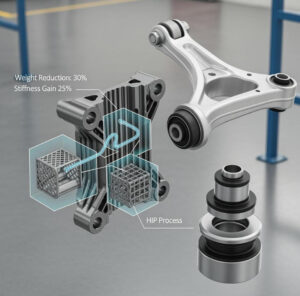
Metal 3D Printed Subframe Connection Mounts and Blocks for EV and Motorsport Chassis
Czytaj więcej "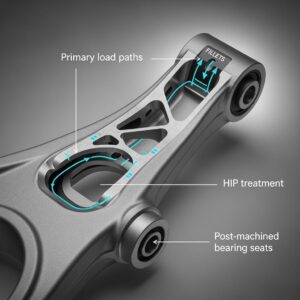
Metal 3D Printing for U.S. Automotive Lightweight Structural Brackets and Suspension Components
Czytaj więcej "Informacje o Met3DP
Ostatnia aktualizacja
Nasz produkt
KONTAKT
Masz pytania? Wyślij nam wiadomość teraz! Po otrzymaniu wiadomości obsłużymy Twoją prośbę całym zespołem.







